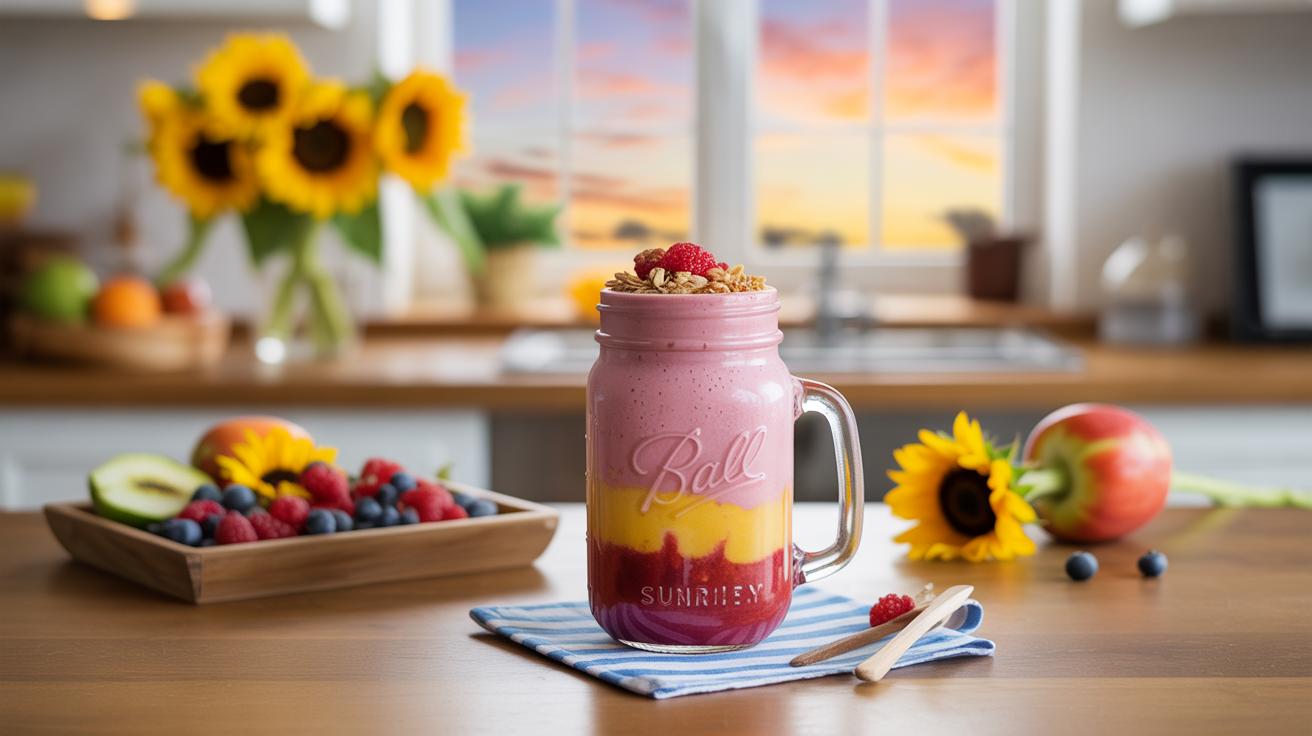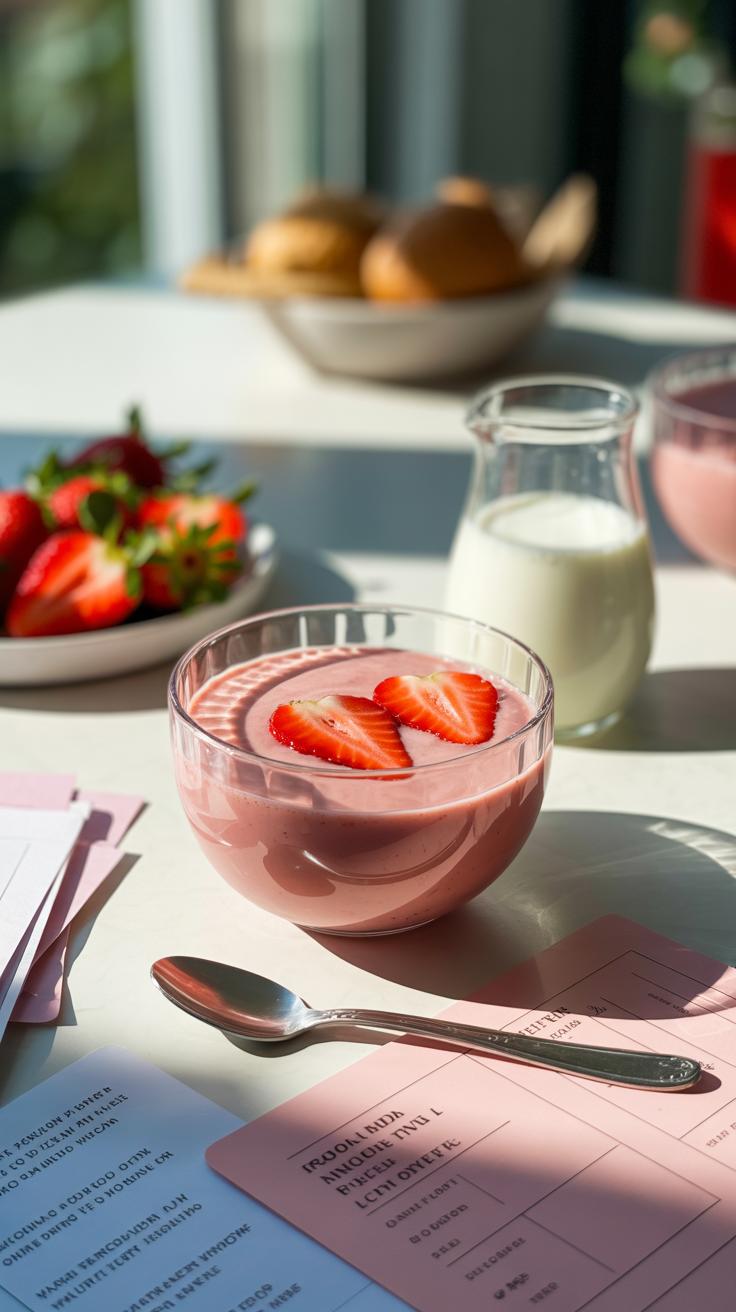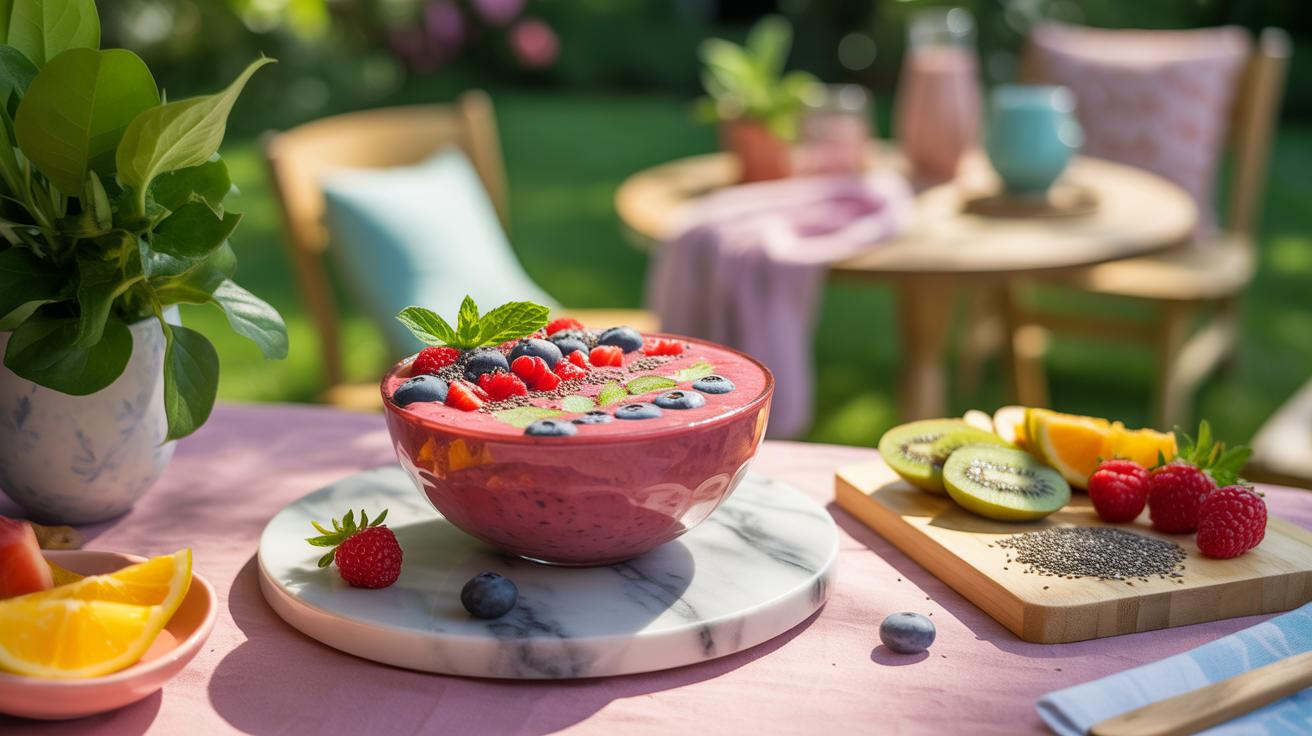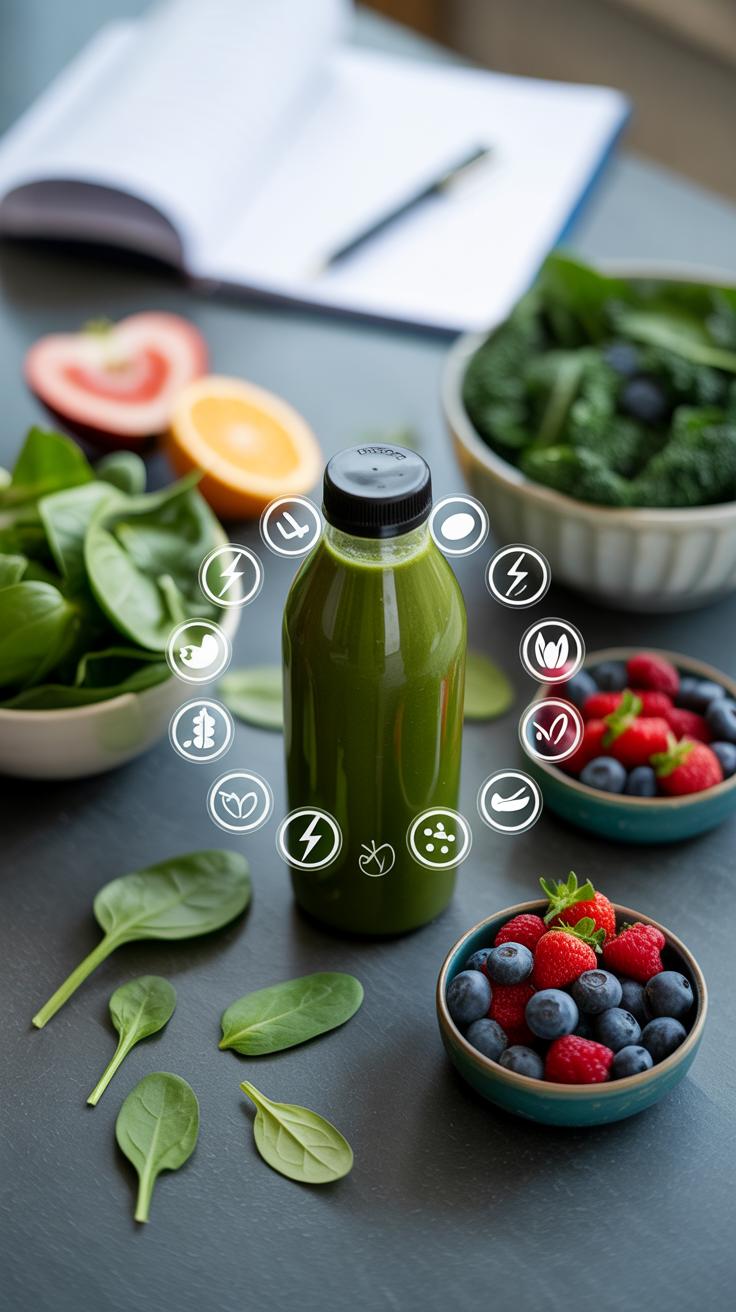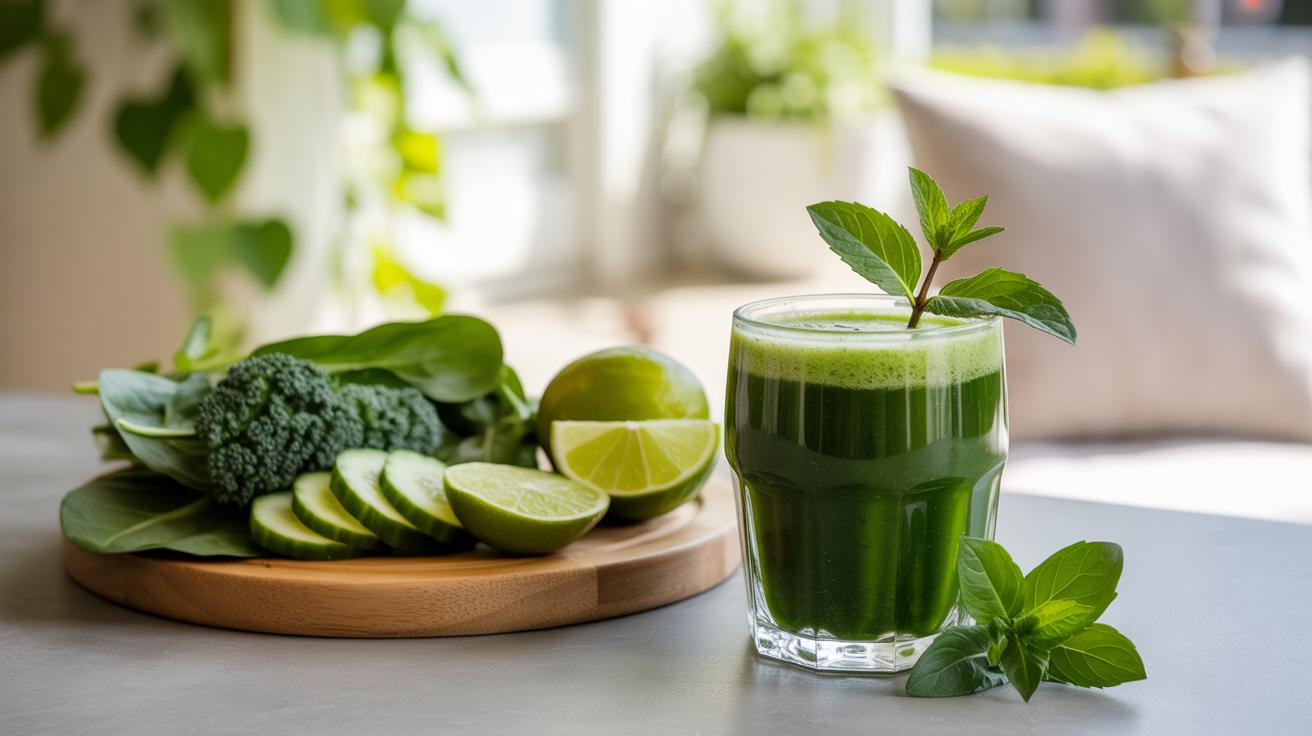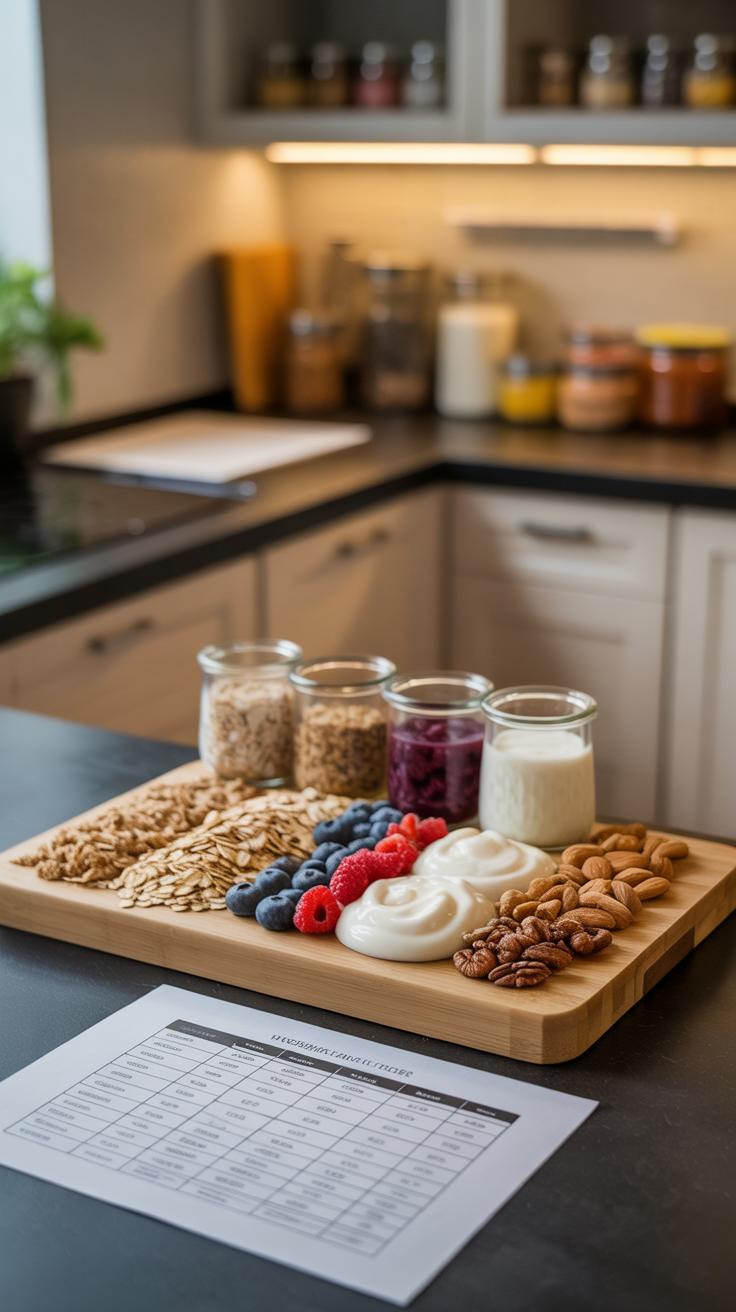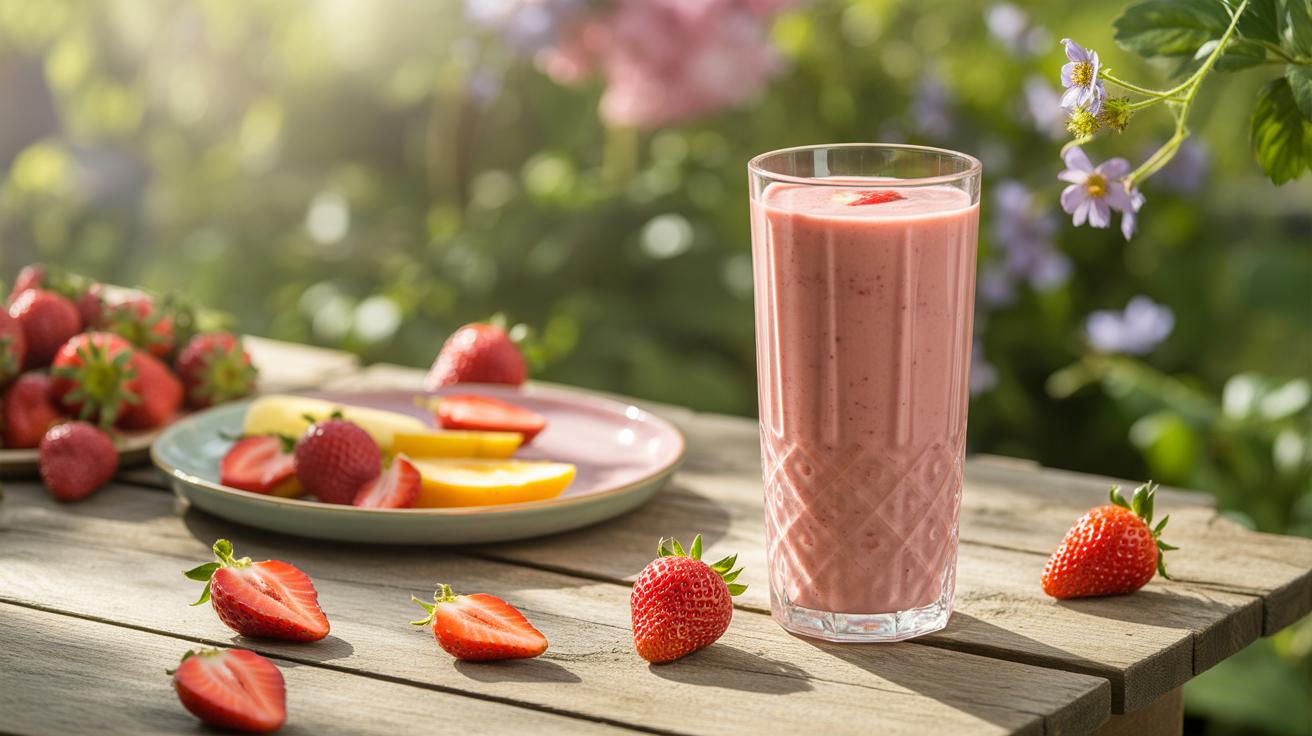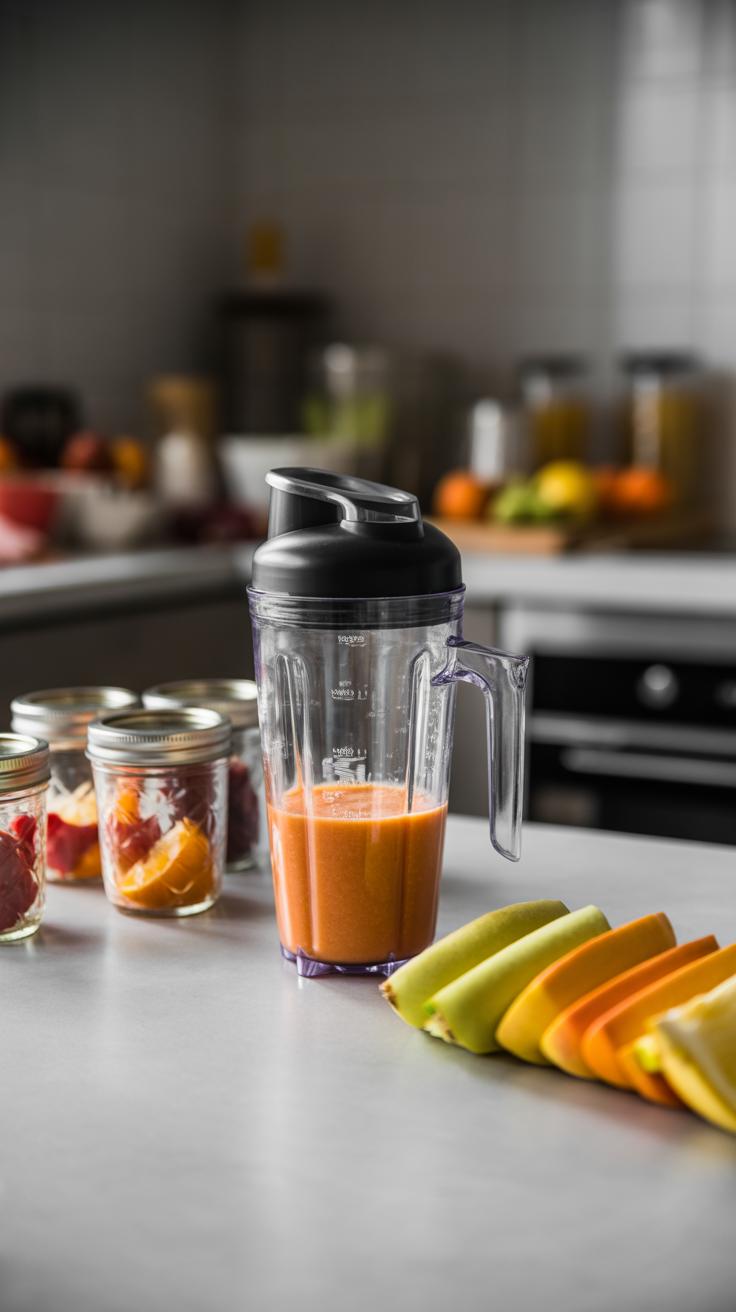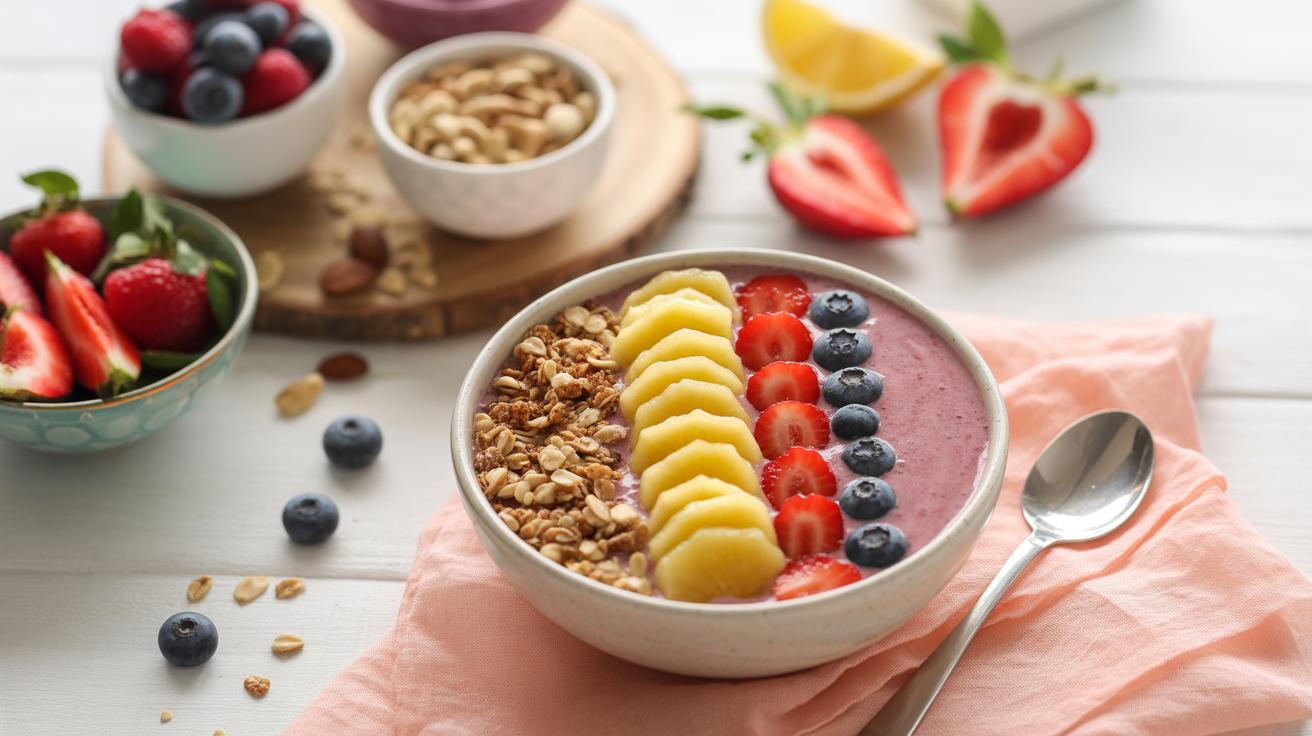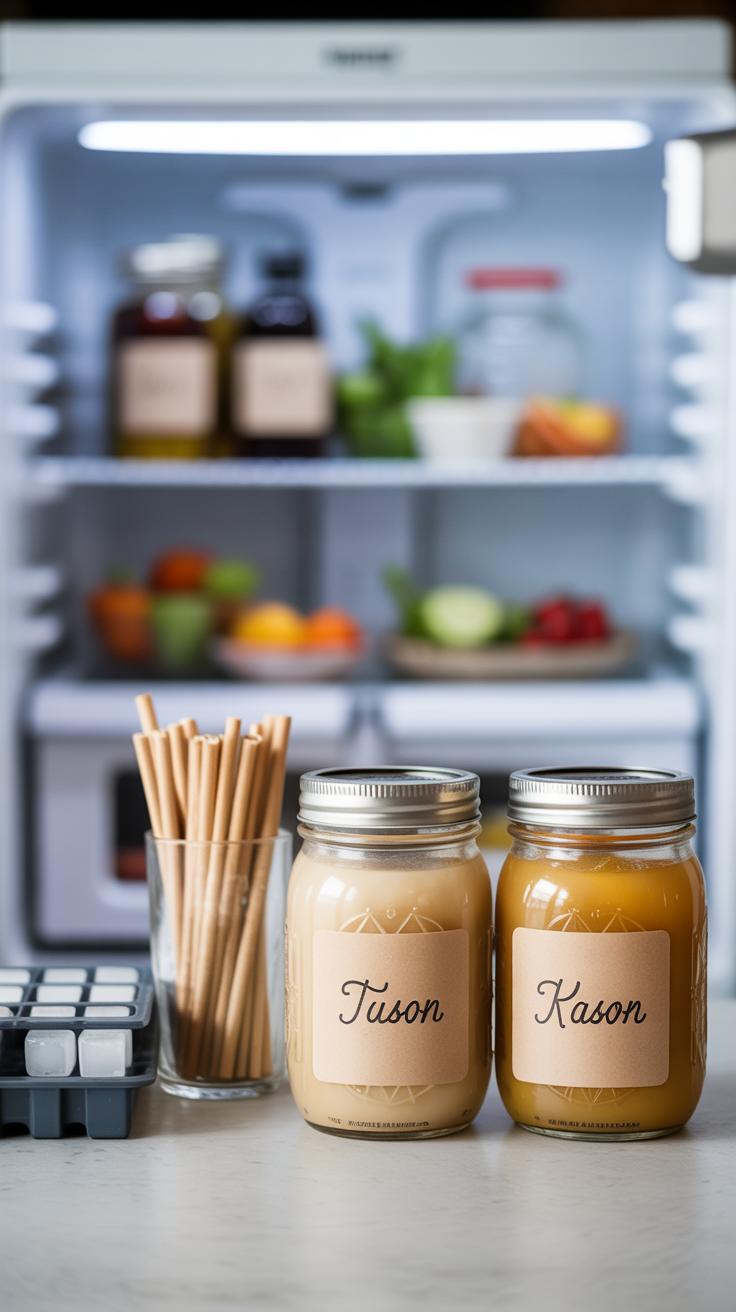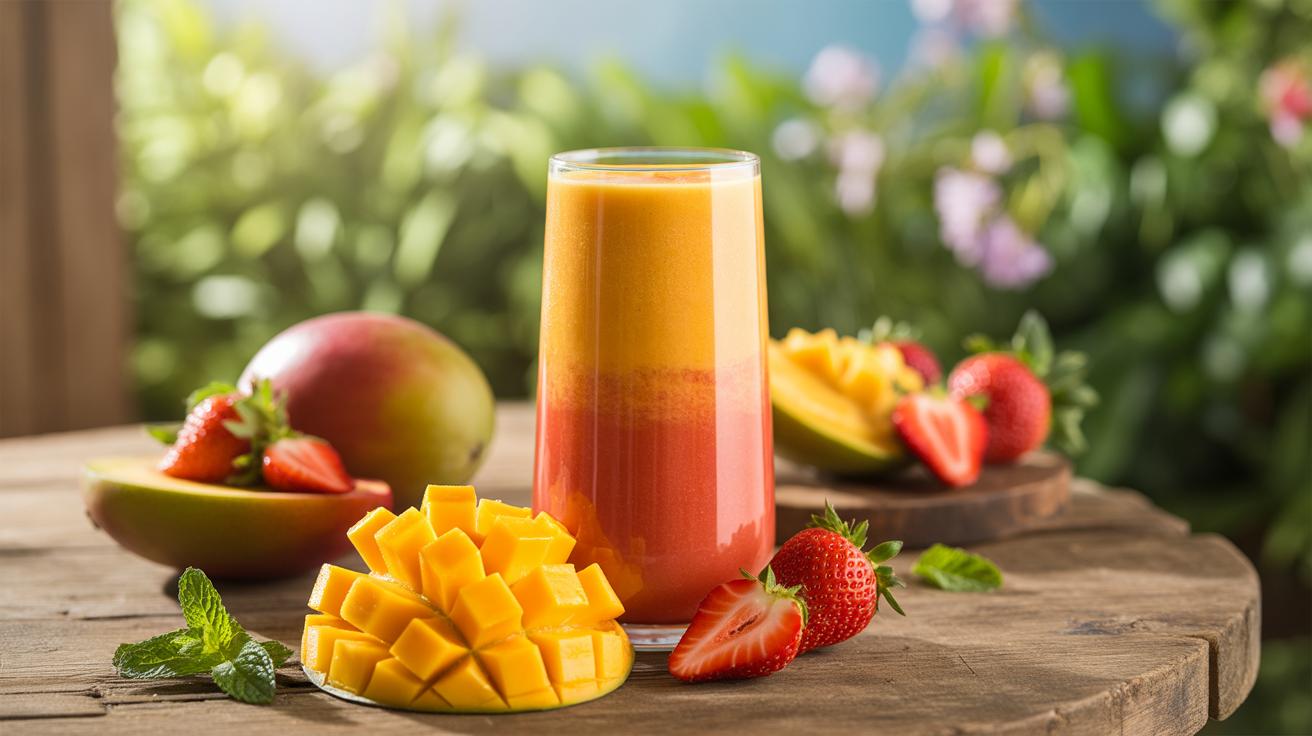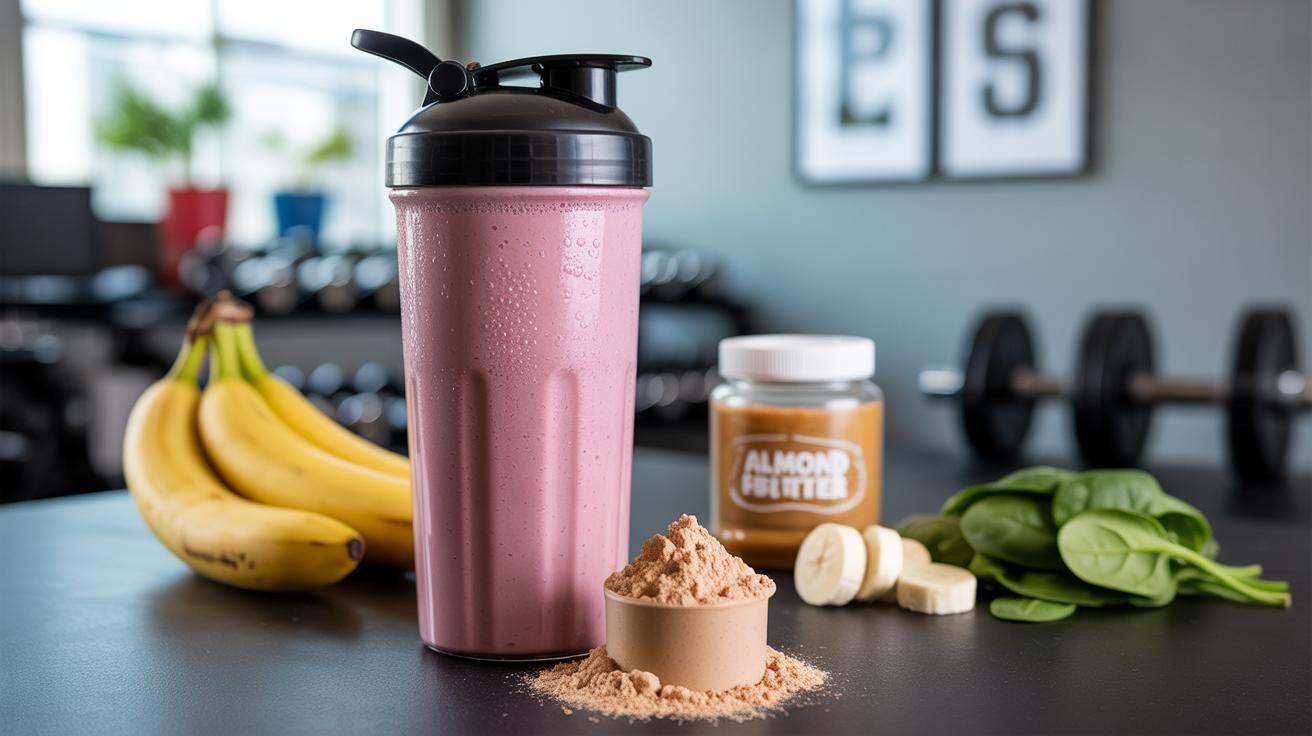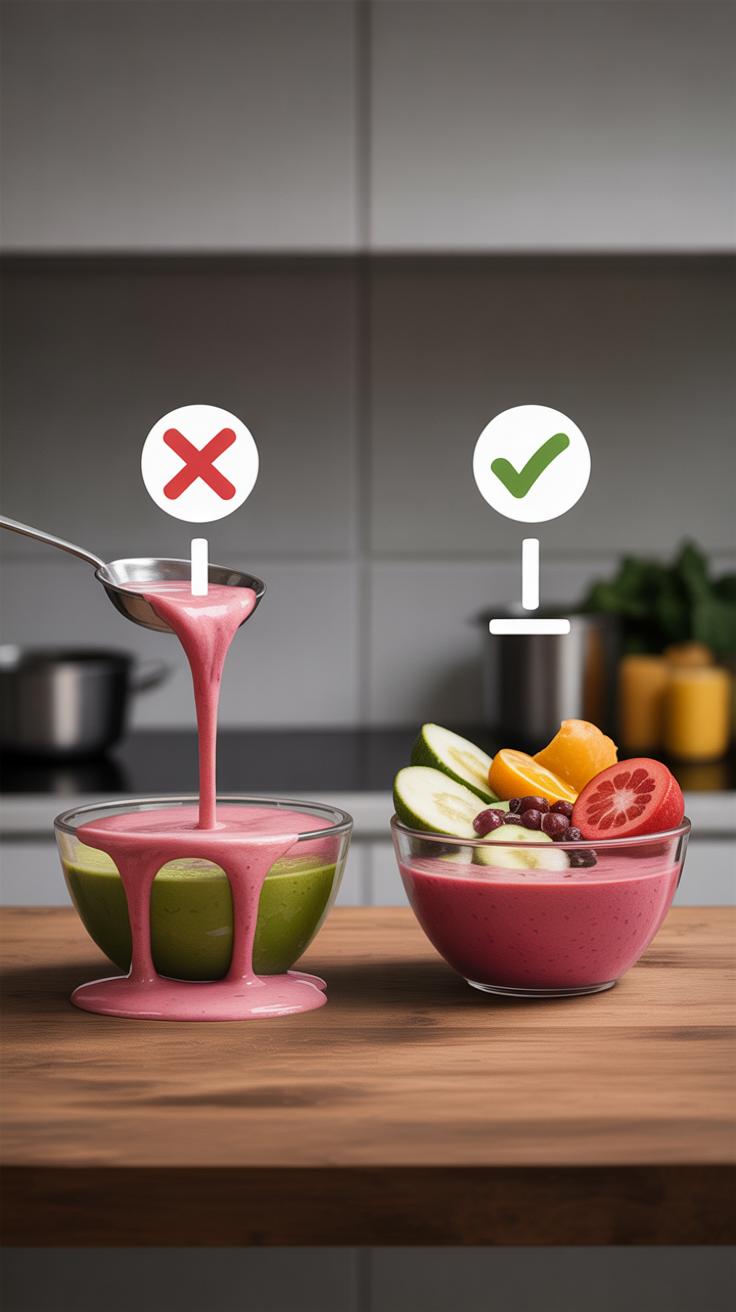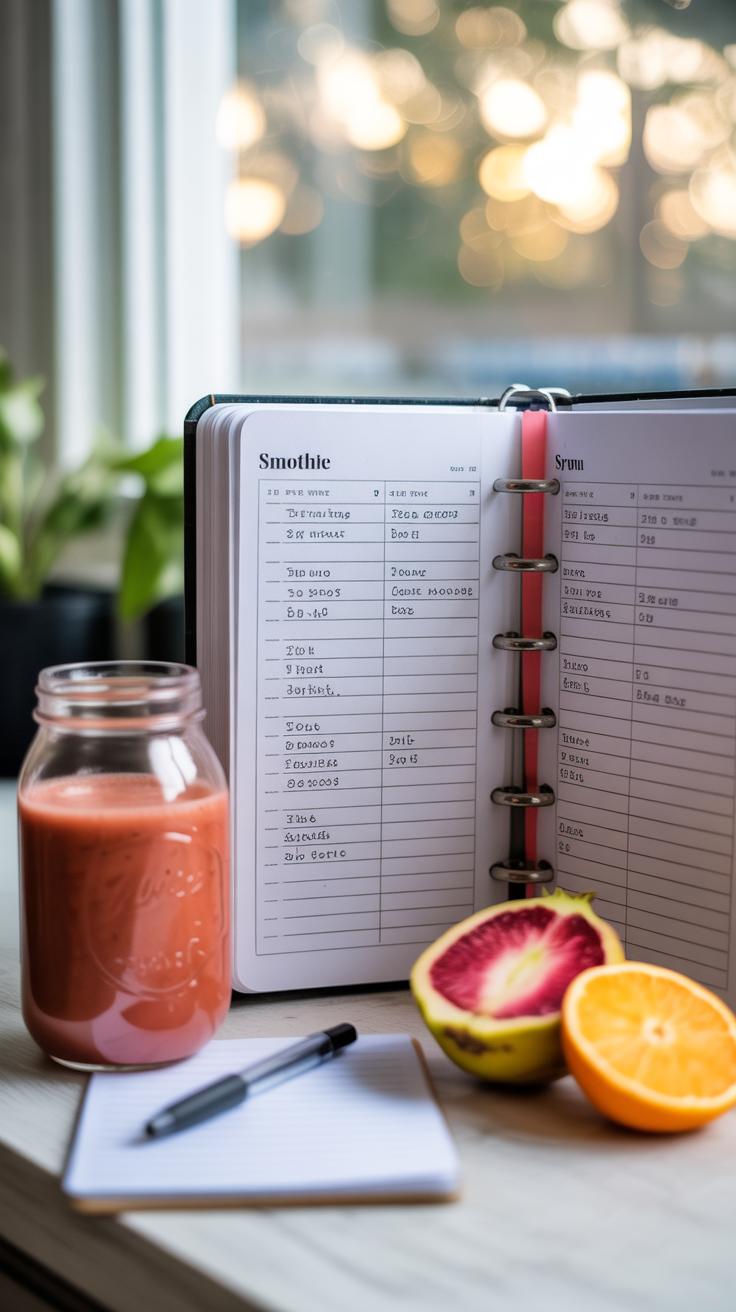Introduction
Starting your day with a nourishing breakfast smoothie can be a great choice. A breakfast smoothie combines fruits, vegetables, and other healthy ingredients blended smoothly for a quick, tasty meal. You get a lot of nutrition in a simple drink. Smoothies can give you energy and help you stay full longer. They make breakfast easy to prepare for busy mornings.
This article explores how a breakfast smoothie can be part of a good diet. It covers what ingredients to use, how smoothies help your health, and gives practical tips to make your perfect smoothie. You will learn to start each day with a drink packed with vitamins, protein, and fiber. Let’s discover the benefits and learn how to create delicious, healthy breakfast smoothies.
Understanding Breakfast Smoothies
What Makes a Smoothie a Breakfast?
A breakfast smoothie is more than just a fruity blend—it’s designed to kickstart your day with energy and sustain you until your next meal. Unlike typical smoothies that might focus mostly on fruits and flavor, breakfast smoothies often include ingredients that deliver protein, fiber, and healthy fats. These qualities help keep you full longer, which is key in the morning when your body needs steady fuel.
Think about it: when you’re rushing out the door, you want something quick but filling. Breakfast smoothies usually have a balanced mix that satisfies hunger and provides nutrition, unlike lighter snack smoothies that might leave you feeling hungry soon after. So, a breakfast smoothie isn’t just a smoothie made in the morning; it’s built to serve as a proper meal.
Common Ingredients in Breakfast Smoothies
Common breakfast smoothie ingredients include:
- Bases: Milk (dairy or plant-based), yogurt, or even vegetable juices. These provide creaminess and extra nutrients like calcium and probiotics.
- Fruits: Bananas, berries, apples, or mangoes add natural sweetness and important vitamins.
- Vegetables: Spinach, kale, or cucumbers are popular. They’re mild but add fiber and micronutrients.
- Protein sources: Protein powder, nut butters, or Greek yogurt help support muscle repair and keep hunger at bay.
- Healthy fats: Avocado, chia seeds, or flaxseeds contribute to satiety and heart health.
You’ll notice including protein and fats alongside fiber-rich fruits or veggies makes these smoothies substantial. It’s that combination which makes breakfast smoothies distinct from other blends you might have just for refreshment or dessert.
Health Benefits of Breakfast Smoothies
Breakfast smoothies offer an easy way to pack your morning with nutrients that many of us might otherwise skip. They provide a blend of vitamins, fiber, protein, and hydration—all key elements for starting your day right. I find that having a smoothie jumpstarts my energy without that heavy or sluggish feeling some breakfasts can bring.
One of the reasons smoothies support a healthy diet is their ability to combine whole fruits and vegetables, which supply antioxidants and micronutrients crucial for immune support and overall health. Plus, the fiber from these ingredients helps keep digestion steady, which can prevent those mid-morning energy dips.
Protein is another critical piece often added through yogurt, milk, or nuts, and it plays a role in sustained fullness and muscle maintenance. Don’t underestimate hydration either—whether it’s from water, milk, or juice, it contributes to waking up your body and brain.
Nutrients Found in Smoothies
Breakfast smoothies typically contain a mix of key nutrients:
- Vitamin C: Found in citrus and berries, helps with immune function and skin health.
- Fiber: Present in fruits, vegetables, and seeds, it aids digestion and maintains blood sugar levels.
- Protein: Comes from dairy, plant-based milk, or nut butters, supporting muscle repair and keeping hunger at bay.
- Potassium: Common in bananas and spinach, important for heart and muscle health.
- Healthy fats: From avocado or flaxseed, essential for brain function and mood regulation.
Sometimes I wonder if I’m missing out when I skip solids, but the variety in a smoothie can supply quite a bit at once, if the ingredients are right.
How Smoothies Can Help Your Energy and Mood
The right combination of ingredients can influence not just your physical energy but your mental state too. Carbohydrates from fruits provide quick energy, while protein and fats slow digestion to keep energy steady rather than giving you a sudden crash.
Moreover, certain nutrients like B vitamins, found in leafy greens and nuts, play a role in producing neurotransmitters—chemicals that affect mood and focus. I’ve noticed that when I sip a smoothie with spinach and a bit of nut butter, I feel more alert and balanced through the morning.
Hydration too contributes to mental sharpness; dehydration makes you tired and less motivated. So, starting your day with a flavorful smoothie doesn’t just fill your stomach, it can actually support your mood and help you face whatever’s coming next.
Choosing the Right Ingredients for You
Picking ingredients for your breakfast smoothie can feel a bit like solving a puzzle. What works for one person might not suit another, especially when health goals or dietary needs come into play. For example, if your aim is to boost protein intake, adding Greek yogurt or protein powder makes sense. But if you’re vegan or lactose intolerant, those aren’t really options. In that case, plant-based proteins like pea or hemp powder, or even silken tofu, might do the trick.
Think about how you like your smoothies to taste, too. Some prefer fruity and sweet, while others lean toward green, earthy flavors. Don’t be afraid to experiment, maybe mixing spinach with banana balances nutrition and taste quite well. If you’re watching sugar, try using low-glycemic fruits like berries instead of sweeter ones.
For gluten-free diets, most smoothie ingredients work fine, but watch out for added granolas or flavored powders. Substituting those with nuts or seeds keeps everything safe and simple. Also, if you want to reduce sugar but keep creaminess, avocado or unsweetened nut butters might surprise you.
Balancing flavor and nutrition sometimes means making peace with imperfection. A smoothie might not taste like dessert, but with a splash of vanilla or a squeeze of citrus, it can feel satisfying without going overboard on calories. Have you noticed how a touch of lemon brightens up flavors? Little tweaks like that can make a big difference. It’s about finding what fuels your morning routine without leaving you bored or overwhelmed.
Making Your Breakfast Smoothie More Filling
Adding ingredients that keep you full for hours can change your morning smoothie from just a quick treat into a real meal. It’s tempting to stick with just fruits and liquids, but those often leave you hungry again soon after. To avoid that, think about tossing in some protein powders, nuts, and seeds. They don’t just bulk up your smoothie — they slow digestion and provide steady energy.
Protein Powders and Their Role
Protein powders are easy to add and come from lots of sources—whey, pea, soy, or even rice. They’re great because protein is known to keep hunger at bay longer than carbs alone. I’ve found that with a scoop of protein powder, I can skip mid-morning snacks more often. Plus, they blend smoothly without messing with the flavor too much, especially if you pick unflavored or mild options.
Protein also helps muscles recover if you’re active. So, mornings after workouts, it might be really handy. But some people don’t love the texture or taste, which is okay. You can always adjust the amount, or pair it with other flavors to balance it out.
Adding Fats and Fiber for Satiety
Fats and fiber have a sneaky way of making you feel full longer than you’d expect. Try tossing in some nuts like almonds or walnuts—they add a bit of crunch if you don’t blend too long, or just creamy texture if you do. Nut butters work well too and mix in easily.
Seeds—chia, flax, or hemp—bring fiber and healthy fats. Chia seeds especially absorb liquid and thicken your smoothie, which might feel more substantial. Fiber slows down digestion, keeping blood sugar steady and hunger away.
Avocado is another good fat source; it’s creamy and mild, unlike oils which might change the taste drastically. Sometimes, adding a handful of leafy greens boosts fiber without making the smoothie “grassy” if balanced right. Though, honestly, taste preferences vary a lot here.
So, when you build your smoothie, think balance: protein for fullness, fats for slow energy, and fiber to keep things steady. Have you tried combining these elements? It might just change how long your breakfast truly satisfies you.
Quick and Easy Breakfast Smoothie Recipes
Let’s talk about some breakfast smoothies you can whip up without much fuss. Sometimes mornings are tight on time, but you still want something nourishing. Smoothies fit right in here because they’re fast, easy, and you often use ingredients already sitting in your kitchen.
Fruit-Based Smoothie Recipe
Here’s a simple fruit smoothie that I often make when I’m in a rush. It’s nothing fancy, just good and reliable. Grab:
- 1 banana (ripe works best)
- 1 cup frozen berries (any kind you like)
- 1 cup milk or any plant-based alternative
- 1 spoonful of honey or maple syrup, if you want it sweeter
- Optional: a handful of oats for some texture and energy
Put everything in the blender. Start blending on low, then crank it up to high. In about 30 seconds, you’ll have a smooth, thick drink. You can add more liquid if it’s too thick. Really, the best part is how flexible this is—you can swap berries for mango or toss in a little yogurt if you feel like it.
Green Vegetable Smoothie Recipe
Some people avoid green smoothies thinking they taste rough or grassy. But with the right balance, they get surprisingly pleasant—and healthy. Here’s one I’ve grown to enjoy:
- 1 cup fresh spinach or kale (spinach is milder)
- 1 green apple, chopped
- 1/2 cucumber, peeled and sliced
- 1 small banana for natural sweetness
- 1 cup water or coconut water
- A squeeze of lemon juice for brightness
Blend these ingredients until smooth. It feels fresh but not overpowering. The banana sort of softens the veggie taste. Also, the cucumber keeps it light. You might think greens would weigh down a smoothie but here they add a clean, crisp note. It might not be a dessert but…it really wakes you up.
Tips for Preparing and Storing Smoothies
Making a smoothie doesn’t need to be a complicated process, but a few small tricks can save time and avoid mess. One thing I’ve learned: prep your ingredients the night before if you have the space in your fridge. Chop fruits or portion out your seeds and nuts in advance. When morning arrives, everything’s ready to toss in the blender quickly. Thinking about speed, frozen fruits are a huge help—they take care of texture and chill without extra ice, so you skip the watering down.
Choosing the right equipment can change the whole game. A high-powered blender will blend even tough greens and seeds in seconds, but even mid-range models do fine for simple combos. I found that having a container with a lid—so you blend and store in the same vessel—cuts down on cleaning time, although you might feel the need to swirl or stir your smoothie once or twice before drinking.
When it comes to storage, smoothies don’t stay fresh forever. If you want to make batches ahead, freezing in ice cube trays works well. Then you just pop cubes back into your blender and top off with liquid when you’re ready. If refrigerated, keep them in airtight glass jars and try to drink within 24 to 48 hours. The color might change—especially with berries or spinach—but tossing it back in the blender often brightens things up again. Sometimes, adding a splash of fresh juice or milk helps refresh the flavor and texture if it’s been sitting a bit too long.
Smoothies Around the World
Traditional Smoothie-Like Drinks
Many cultures have their own versions of smoothie-like drinks, often rooted deeply in local ingredients and traditions. Take India’s lassi, for example. It’s a yogurt-based blend, sometimes sweet, sometimes salty, flavored with spices like cardamom or rose water. It’s both refreshing and nourishing, especially in the heat. Then there’s doogh from Iran, a similar yogurt drink, usually mixed with water and mint, offering a tangy contrast that complements meals perfectly. Both aren’t quite what you’d call smoothies by Western standards, but they share that creamy, drinkable ease.
In the Caribbean, you find fruit shakes made from fresh, tropical fruits like mango, papaya, or guava, often mixed with milk or coconut milk. The ingredients are simple, but the impact is rich and satisfying. It feels like an escape, even in the morning. You might wonder why these beverages haven’t fully caught on everywhere—they have a history as long as some smoothies, yet they remain regional favorites.
Modern Variations Globally
Today’s smoothie scene borrows freely across cultures. You might find a traditional lassi swirled into a smoothie bowl with chia seeds or avocado added for creaminess. Or a doogh-inspired drink turned into a savory smoothie with cucumbers and herbs, pushing boundaries of what a morning smoothie can be. These combinations sometimes confuse purists but reflect changing tastes.
Also, the rise of plant-based diets has pushed creative twists worldwide. Smoothies now often include ingredients like matcha from Japan or turmeric from India—not just for flavor, but for a perceived health boost. Smoothies have become less about simple fruit blends and more like culinary experiments, evolving beyond their origins. You might ask yourself, does this expansion make smoothies better, or just more complicated? It’s a delicate balance, and maybe the answer is different for each of us.
Common Mistakes to Avoid When Making Breakfast Smoothies
Avoiding Too Much Sugar
When you think about your breakfast smoothie, it’s easy to reach for sweet ingredients—fruit, juices, flavored yogurts. But too much sugar can quickly turn your healthy start into a sugar rush followed by a slump. You might not notice the added sugars hiding in certain ingredients like flavored almond milk or sweetened protein powders.
Instead of adding more sugar, try to enhance sweetness naturally. Ripe bananas, a few dates, or a splash of vanilla extract can do the trick without overwhelming your smoothie. A question to ask yourself might be: do I really need extra sweeteners, or is this smoothie sweet enough on its own already? Sometimes, less is more, even if your taste buds beg for that sugary hit.
Ensuring Balanced Nutrition
Getting the right mix of protein, fat, carbs, and fiber is where many breakfasts smoothies falter. You might toss in fruits and veggies but forget about protein or healthy fats, leaving you hungry an hour later.
Think about adding nuts, seeds, or a scoop of protein powder alongside some leafy greens or oats. Balancing these elements helps stabilize your energy. It’s tempting to rely on just fruit, but a smoothie without fats or protein can feel light and unsatisfying—almost like a glorified juice.
Sometimes, it’s tricky to get this balance right at first, and you might find yourself experimenting a bit. But keep at it—your body will thank you when that smoothie keeps you full for hours, rather than making you crave a second breakfast.
Creating a Smoothie Routine to Boost Your Morning
Making smoothies a part of your morning can feel tricky at first. But once you find a rhythm, it becomes almost automatic. One way to get started is to pick a specific time each morning—maybe right after you wake up or while the coffee brews. Sticking to that time helps your body expect it, making it easier to keep going.
Planning your ingredients ahead of time takes a bit of thought but pays off big. I find it helpful to set aside a few minutes each weekend to shop and prep. Chop fruits, portion out nuts or seeds, even freeze some veggies in individual bags. That way, mornings aren’t a scramble trying to remember what you need or where it’s stored.
Keeping the routine interesting matters more than you might guess. Sometimes, I get bored with the same berries and spinach combo, so switching up ingredients makes a big difference. Have you tried adding spices, like cinnamon or ginger? Or maybe a splash of different plant milks? Even a handful of fresh herbs can wake things up. This not only keeps your taste buds curious but also spins your morning habit in fresh directions.
- Choose a consistent smoothie time to build habit
- Prep and portion ingredients in advance weekly
- Rotate ingredients to keep flavors and textures varied
- Experiment with unexpected additions like spices or herbs
- Think about what you’re in the mood for, sometimes savory, sometimes sweet
Following these steps can make smoothies feel less like a chore and more like a small morning treat you actually look forward to. I’ve caught myself craving them just because I knew I had something new waiting in the freezer.
Conclusions
Breakfast smoothies offer an easy way to fuel your body in the morning. By choosing the right ingredients, you can enjoy a drink full of vitamins, minerals, and energy. These blends can fit your taste and health needs, helping you start every day well. Smoothies also support a balanced diet with fruits, vegetables, and protein in one quick meal.
Try the tips and ideas shared here to find your favorite breakfast smoothie. Experiment with different foods until you find what you like best. Turn smoothie making into a simple habit that helps you stay healthy, feel good, and be ready for your day. A nutritious smoothie is more than a drink; it’s a great start for your mornings.

